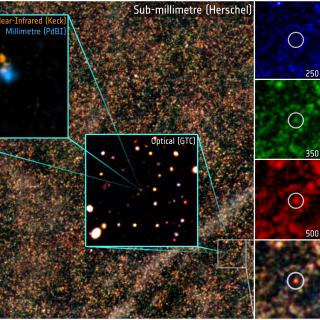Bibcode
Mathur, S.; Gupta, A.; Page, K.; Pogge, R. W.; Krongold, Y.; Goad, M. R.; Adams, S. M.; Anderson, M. D.; Arévalo, P.; Barth, A. J.; Bazhaw, C.; Beatty, T. G.; Bentz, M. C.; Bigley, A.; Bisogni, S.; Borman, G. A.; Boroson, T. A.; Bottorff, M. C.; Brandt, W. N.; Breeveld, A. A.; Brown, J. E.; Brown, J. S.; Cackett, E. M.; Canalizo, G.; Carini, M. T.; Clubb, K. I.; Comerford, J. M.; Coker, C. T.; Corsini, E. M.; Crenshaw, D. M.; Croft, S.; Croxall, K. V.; Dalla Bontà, E.; Deason, A. J.; Denney, K. D.; De Lorenzo-Cáceres, A.; De Rosa, G.; Dietrich, M.; Edelson, R.; Ely, J.; Eracleous, M.; Evans, P. A.; Fausnaugh, M. M.; Ferland, G. J.; Filippenko, A. V.; Flatland, K.; Fox, O. D.; Gates, E. L.; Gehrels, N.; Geier, S.; Gelbord, J. M.; Gorjian, V.; Greene, J. E.; Grier, C. J.; Grupe, D.; Hall, P. B.; Henderson, C. B.; Hicks, S.; Holmbeck, E.; Holoien, T. W.-S.; Horenstein, D.; Horne, Keith; Hutchison, T.; Im, M.; Jensen, J. J.; Johnson, C. A.; Joner, M. D.; Jones, J.; Kaastra, J.; Kaspi, S.; Kelly, B. C.; Kelly, P. L.; Kennea, J. A.; Kim, M.; Kim, S.; Kim, S. C.; King, A.; Klimanov, S. A.; Kochanek, C. S.; Korista, K. T.; Kriss, G. A.; Lau, M. W.; Lee, J. C.; Leonard, D. C.; Li, M.; Lira, P.; Ma, Z.; MacInnis, F.; Manne-Nicholas, E. R.; Malkan, M. A.; Mauerhan, J. C.; McGurk, R.; McHardy, I. M.; Montouri, C.; Morelli, L.; Mosquera, A.; Mudd, D.; Muller-Sanchez, F.; Musso, R.; Nazarov, S. V. et al.
Referencia bibliográfica
The Astrophysical Journal, Volume 846, Issue 1, article id. 55, 9 pp. (2017).
Fecha de publicación:
9
2017
Revista
Número de citas
38
Número de citas referidas
35
Descripción
During the Space Telescope and Optical Reverberation Mapping Project
observations of NGC 5548, the continuum and emission-line variability
became decorrelated during the second half of the six-month-long
observing campaign. Here we present Swift and Chandra X-ray spectra of
NGC 5548 obtained as part of the campaign. The Swift spectra show that
excess flux (relative to a power-law continuum) in the soft X-ray band
appears before the start of the anomalous emission-line behavior, peaks
during the period of the anomaly, and then declines. This is a
model-independent result suggesting that the soft excess is related to
the anomaly. We divide the Swift data into on- and off-anomaly spectra
to characterize the soft excess via spectral fitting. The cause of the
spectral differences is likely due to a change in the intrinsic spectrum
rather than to variable obscuration or partial covering. The Chandra
spectra have lower signal-to-noise ratios, but are consistent with the
Swift data. Our preferred model of the soft excess is emission from an
optically thick, warm Comptonizing corona, the effective optical depth
of which increases during the anomaly. This model simultaneously
explains all three observations: the UV emission-line flux decrease, the
soft-excess increase, and the emission-line anomaly.
Proyectos relacionados

Formación y Evolución de Galaxias: Observaciones Infrarrojas y en otras Longitudes de Onda
Este grupo desarrolla varios proyectos extragalácticos en diferentes rangos del espectro electromagnético utilizando satélites y telescopios en tierra para estudiar la evolución cosmológica de las galaxias y el origen de la actividad nuclear en galaxias activas. En el aspecto instrumental, el grupo forma parte del consorcio internacional que ha
Ismael
Pérez Fournon

Huellas de la Formación de las Galaxias: Poblaciones estelares, Dinámica y Morfología
Bienvenida a la página web del g rupo de investigación Traces of Galaxy Formation. Somos un grupo de investigación amplio, diverso y muy activo cuyo objetivo principal es entender la formación de galaxias en el Universo de una manera lo más completa posible. Con el estudio detellado de las poblaciones estelares como bandera, estamos constantemente
Anna
Ferré Mateu